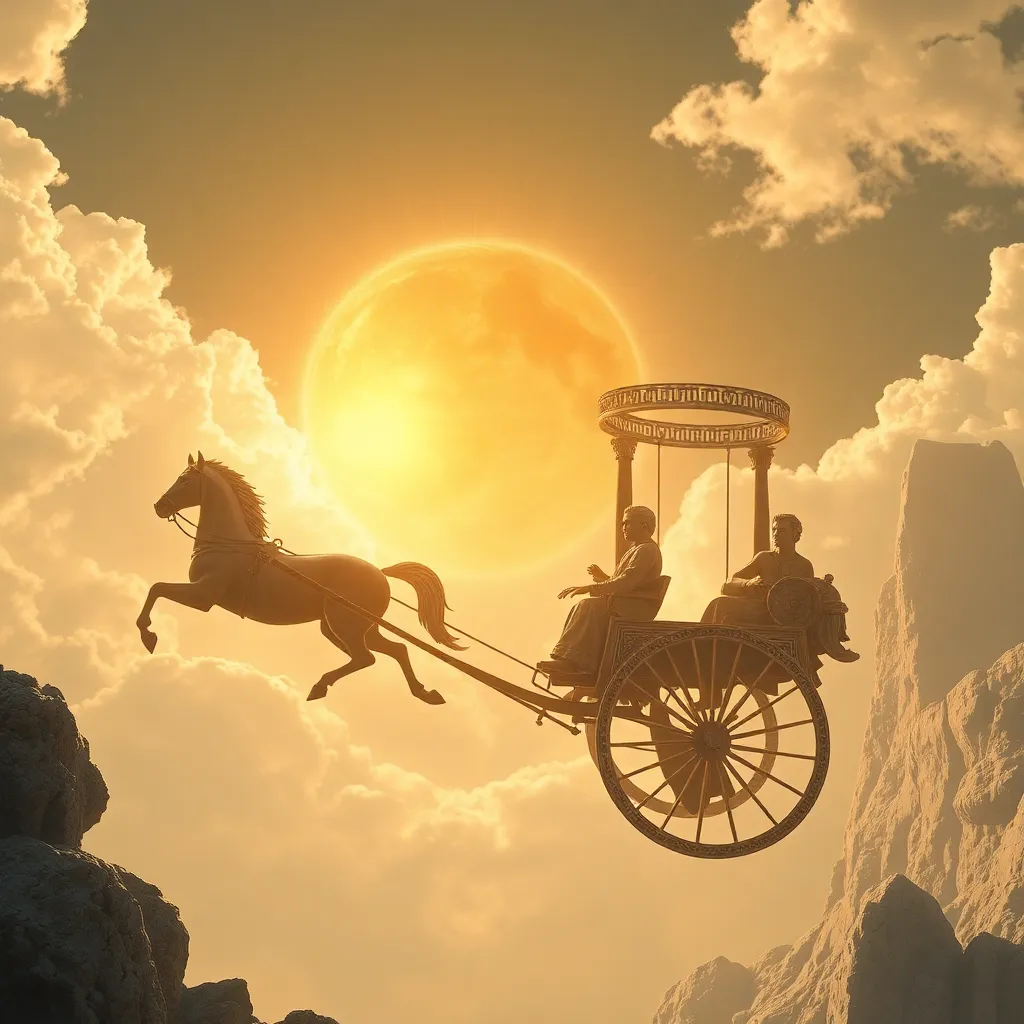The Symbolism of Apollo’s Chariot: The Journey of the Sun
I. Introduction
Apollo, one of the most revered deities in Greek mythology, embodies a multitude of aspects, including music, prophecy, healing, and notably, the sun. His connection to the sun is central to his identity, symbolizing enlightenment, truth, and enlightenment in a world often shrouded in darkness.
The significance of the sun extends beyond mere illumination; it has been a vital element in the cosmologies and daily lives of ancient cultures. The sun was revered as a source of life, guiding agricultural practices and inspiring countless myths and rituals.
This article aims to explore the rich symbolism of Apollo’s chariot, which represents the sun’s journey across the sky, examining its implications in mythology and its enduring legacy in modern culture.
II. Apollo: The God of Light and the Sun
Apollo is often depicted as a youthful and handsome god, embodying ideal beauty. His attributes include the lyre, laurel wreath, and, most notably, his radiant sun chariot.
- Characteristics: Apollo is associated with clarity, reason, and foresight. He symbolizes harmony and balance, often portrayed as the mediator between light and darkness.
- Role in Mythology: As the sun god, Apollo is responsible for guiding the sun across the sky each day, illuminating the world and offering warmth.
- Duality of Light and Darkness: Apollo’s light represents knowledge and truth, while darkness symbolizes ignorance and chaos. This duality reflects the constant struggle between enlightenment and obscurity.
III. The Chariot as a Symbol of Movement and Change
Apollo’s chariot, typically drawn by fiery steeds, serves as a powerful metaphor for the dynamic nature of life and the passage of time.
- Description: The chariot is often described as a magnificent, golden vehicle, shining brightly in the sky as it carries Apollo across the heavens.
- Metaphor for Time: The daily journey of the sun symbolizes the relentless march of time, marking the cycles of day and night.
- Sun’s Journey: As the sun rises in the east and sets in the west, Apollo’s journey represents not only the physical movement of celestial bodies but also the broader themes of change and transformation.
IV. The Significance of the Sun in Ancient Greek Culture
The sun held a central place in ancient Greek culture, revered as a life-giving force and a symbol of divine power.
- Source of Life: The sun was essential for agriculture, influencing planting and harvesting cycles, and was thus considered a deity to be honored.
- Cultural Rituals: Festivals such as the Pythian Games celebrated Apollo and often included sun-related themes, emphasizing the god’s role in sustaining life.
- Art and Literature: The sun’s imagery permeated Greek art and literature, from poetic references to visual representations in sculptures and pottery.
V. The Journey of the Sun: Mythological Interpretations
Apollo’s journey across the sky has inspired various myths that highlight the challenges and adventures associated with the sun’s passage.
- Different Myths: One famous myth recounts Apollo’s battle against the serpent Python, symbolizing the struggle against darkness and chaos.
- Challenges Faced: Apollo must navigate the dangers of the sky, including storms and obstacles, representing the trials and tribulations of life.
- Relationship with Other Deities: Apollo often interacts with other gods, such as Helios, the personification of the sun, and Artemis, his twin sister, who embodies the moon and night.
VI. The Chariot and Its Connection to the Cycle of Seasons
The sun’s journey is intricately linked to the changing seasons, reflecting the cyclical nature of life.
- Impact on Seasons: Apollo’s chariot symbolizes the seasonal changes, as the sun’s position influences the length of days and nights, marking the transition from spring to winter.
- Rebirth and Renewal: The return of the sun each spring signifies rebirth and renewal, mirroring the cycles of nature.
- Human Life and Agriculture: Seasonal changes dictated agricultural practices, with festivals often celebrating the harvest and the sun’s vital role in sustaining crops.
VII. Modern Interpretations of Apollo’s Chariot
Apollo’s symbolism continues to resonate in contemporary culture, influencing various artistic and literary expressions.
- Contemporary Influence: The themes of enlightenment and the quest for knowledge, embodied in Apollo’s symbolism, remain relevant in modern discourse.
- Artistic Representations: Apollo’s chariot has inspired countless works of art, from paintings and sculptures to modern films and literature that draw on mythological motifs.
- Relevance Today: The journey of Apollo serves as a metaphor for personal growth and the pursuit of truth in an age often clouded by misinformation.
VIII. Conclusion
In exploring the symbolism of Apollo’s chariot, we uncover a rich tapestry of meaning that extends beyond ancient mythology. The journey of the sun represents not only the passage of time but also the duality of light and darkness, the cycles of nature, and the enduring human quest for knowledge and truth.
Apollo’s legacy continues to inspire, inviting us to reflect on our own journeys and the light we seek in our lives. As we delve deeper into mythological symbolism, we discover timeless truths that resonate across cultures and generations.




